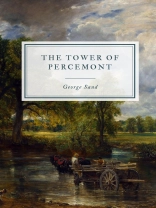‘The Tower of Percemont’ by George Sand, a luminary of French literature, is a remarkable narrative set against the backdrop of the French Third Republic. This gripping novel unfolds in the scenic Auvergne region of France, interweaving the socio-political changes post-Paris Commune with the tale of a provincial lawyer embodying the rising middle-class. As the story unfolds, you’ll journey into a compelling exploration of republicanism and patriarchal societal norms, as the protagonist seeks to guide young men towards their future familial and marital responsibilities, setting up a stark contrast to the pernicious influence of a wicked stepmother and religious congregations’ educational efforts.
Sand’s literary genius shines through in this sociopolitically charged narrative where the triumph of secular power over not just clericalism, but also the waning monarchy, vividly illustrates the societal dynamics of the era. The Tower of Percemont subtly unveils the dichotomy between rebellion and submission, as seen through a young female character who grapples with her societal constraints rather than being forced into marginalization. This intricate tale, nuanced with the tensions of a potential return to the chaos of the Paris Commune, promises a captivating immersion into a transformative period in French history, showcasing the power and resilience of humanity amidst profound change.
เกี่ยวกับผู้แต่ง
George Sand, born Amantine Lucile Aurore Dupin, was a prolific and revolutionary French novelist of the 19th century, widely celebrated for her groundbreaking exploration of gender, societal norms, and class struggle. She broke barriers not only with her provocative works, but also through her audacious choice to publish under a male pseudonym at a time when women writers faced severe discrimination. Among her most notable works are ‘Indiana’, ‘Lélia’, and ‘Consuelo’, all of which remain cherished classics of French literature. Sand’s vast body of work and her impactful role in questioning and transforming the literary conventions of her time firmly establish her as a significant figure in the world of literature. Her extraordinary talent for storytelling, combined with her penchant for intricate character development and evocative descriptions, have cemented her legacy as one of the greatest writers of her era.












